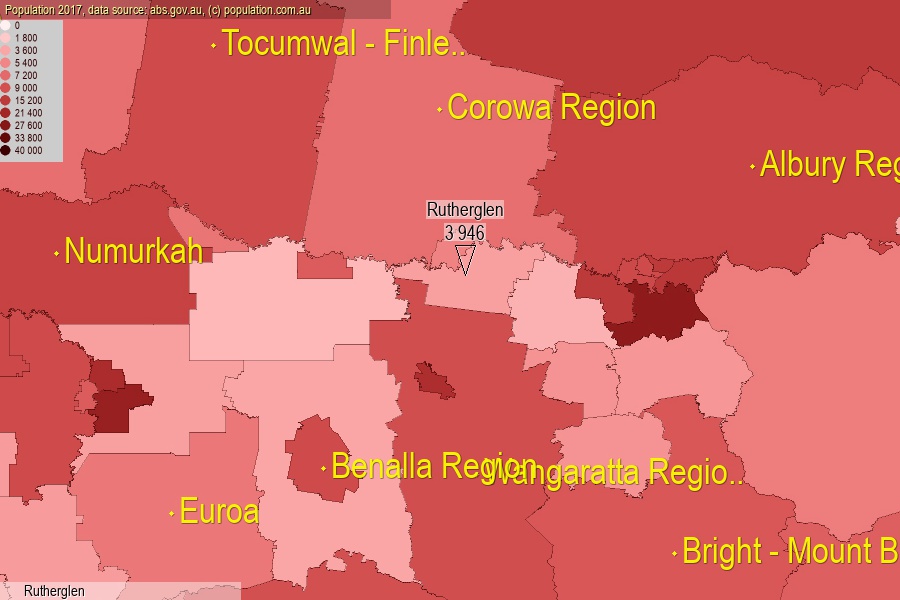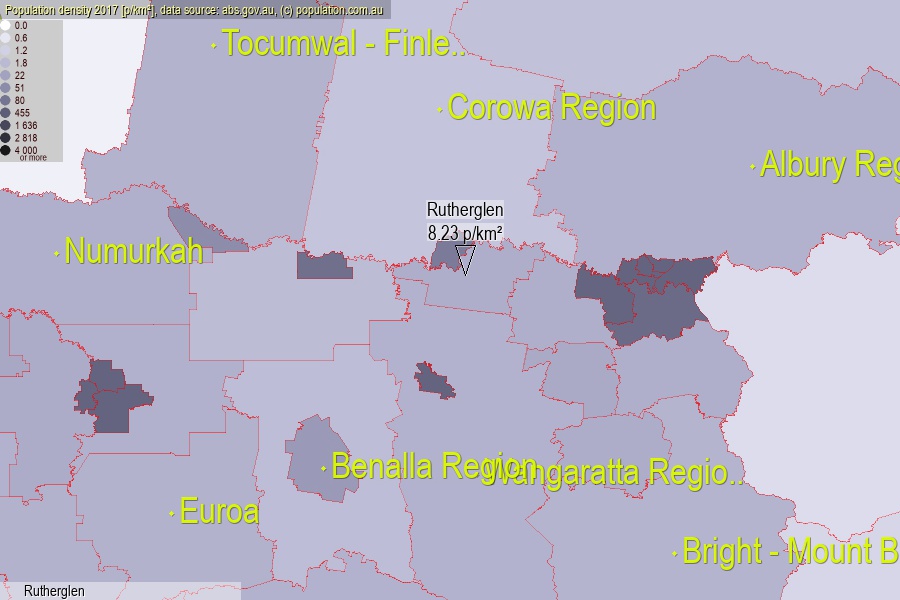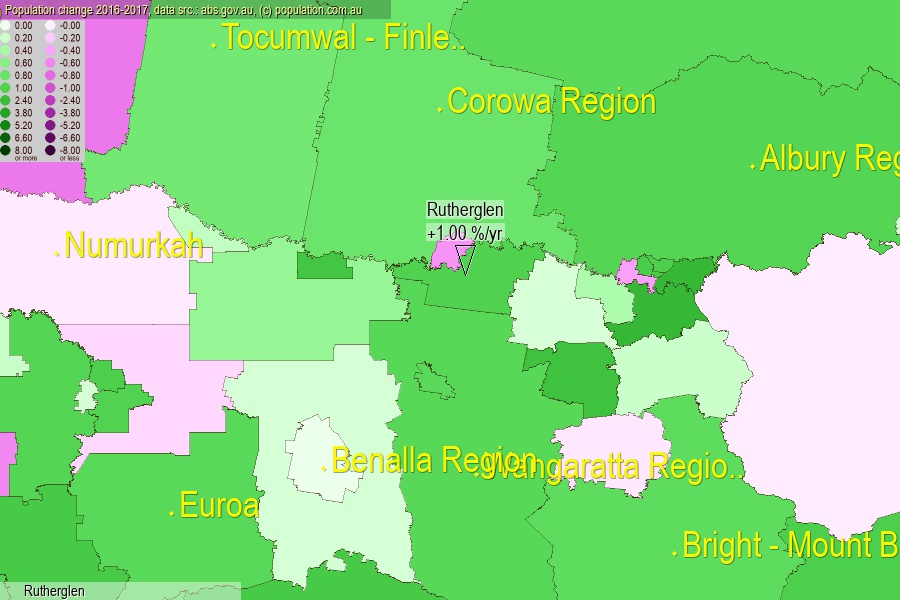 population.com.au
population.com.auLast official estimated population of Rutherglen (as Statistical Area Level 2) was 3 946 people (on 2017-06-30)[2]. This was 0.02% of total Australian population and 0.061% of VIC population. Area of Rutherglen is 479.30 km², in this year population density was 8.23 p/km² . If population growth rate would be same as in period 2016-2017 (+1%/yr), Rutherglen population in 2025 would be 4 272. [0]



Click to enlarge. Rutherglen is located in the center of the images.
Population [people], population density [p./km²] and population change [%/year] [2]
View borders » (new window) [4]
[1991-1992] -0.09 %/Yr.
[1992-1993] -0.29 %/Yr.
[1993-1994] -0.17 %/Yr.
[1994-1995] -0.06 %/Yr.
[1995-1996] -0.09 %/Yr.
[1996-1997] -0.09 %/Yr.
[1997-1998] -0.12 %/Yr.
[1998-1999] -0.03 %/Yr.
[1999-2000] -0.06 %/Yr.
[2000-2001] +0.12 %/Yr.
[2001-2002] +0.87 %/Yr.
[2002-2003] +0.92 %/Yr.
[2003-2004] +1.14 %/Yr.
[2004-2005] +1.08 %/Yr.
[2005-2006] +1.51 %/Yr.
[2006-2007] +0.97 %/Yr.
[2007-2008] +0.87 %/Yr.
[2008-2009] +0.62 %/Yr.
[2009-2010] +0.40 %/Yr.
[2010-2011] +0.21 %/Yr.
[2011-2012] +0.78 %/Yr.
[2012-2013] +0.72 %/Yr.
[2013-2014] +0.61 %/Yr.
[2014-2015] +1.02 %/Yr.
[2015-2016] +1.30 %/Yr.
[2016-2017] +1.00 %/Yr.
[0] Calculated with linear interpolation from officially estimated population
[1] Read more about SA2 and Australian Statistical Geography Standard (ASGS) on abs.gov.au
[2] Population data from Australian Bureau of Statistics (Population and density: 2017; change: 2016-2017)
[3] Digital Boundaries: Australian Statistical Geography Standard (ASGS) 2016.
[4] Border coordinates are simplifyed using Ramer-Douglas-Peucker algorithm.